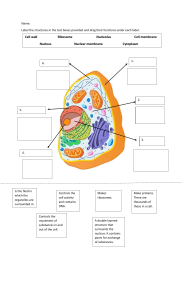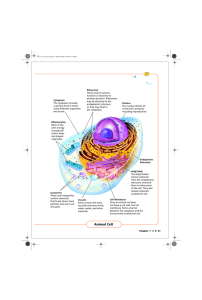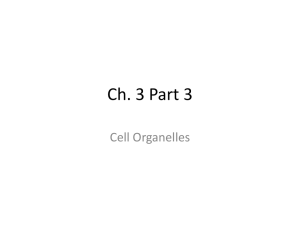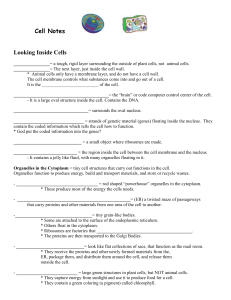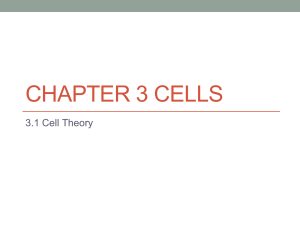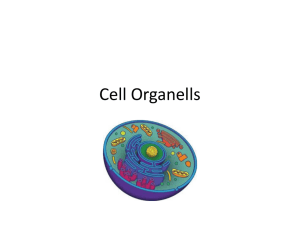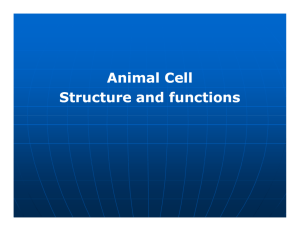Cell Organelles Powerpoint
advertisement
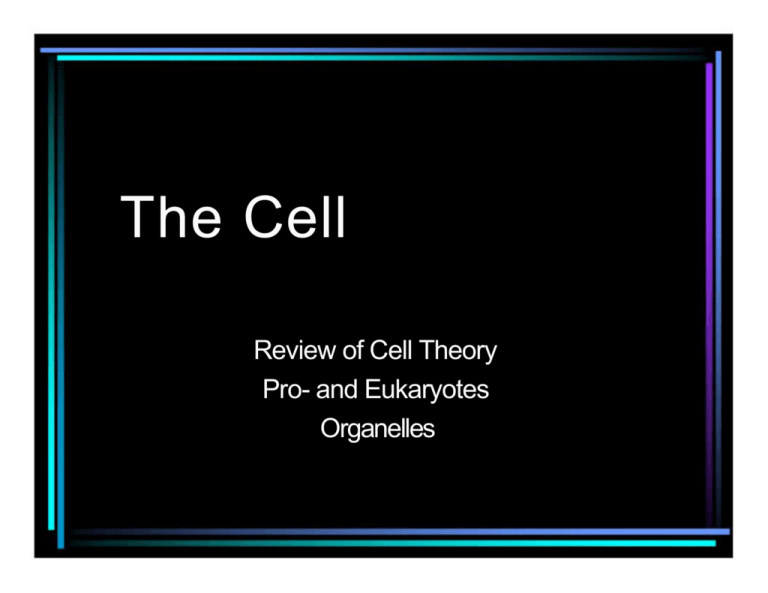
The Cell Review of Cell Theory Pro- and Eukaryotes Organelles Review of Cell Theory • Principles of cell theory: 1. All living things are made of cells. 2. Cells carry out the functions needed to support life. 3. Cells come only from other living cells. Review of Cell Theory • Contributing scientists - Anton von Leeuwenhoek: Invented the microscope and observed tiny living things in water - Robert Hooke: Coined the term "cell" after observing that cork consisted of tiny chambers - Francesco Redi: Proved that living things cannot be produced from non-living matter - Louis Pasteur: Discovered that cells come only from other living cells Two Types of Cells Prokaryotes • First cells to evolve • No nucleus • Hereditary info is contained within cytoplasm • Ex: Archaea, Bacteria Eukaryotes • Evolved from prokaryotes • Have a nucleus • Hereditary info is contained within the nucleus • Ex: Animals, Protists, Fungi, Plants And now for. THE CELL ORGANELLESTINY MEMBRANE-BOUND STRUCTURES THAT PERFORM SPECIAL FUNCTIONS INSIDE THE CELL Cell Wall • Only found surrounding plant, fungal and bacterial cells • Made of cellulose • Is rigid, strong and stiff • Provides support and protection for the cell • It's like the wall that surrounds a medieval city! Cell Membrane • Surrounds all cells - In a plant cell, it lies beneath the cell wall - In animal cells, it is the outer boundary (made of cholesterol) • Provides cell with - Protection - Control of movement of materials in/out of cell - Support - Maintains condition of cell • It's like the border of a city! Nucleus • Identified in 1833 by Robert Brown • Found in both plant and animal cells • Large, oval shape • Centrally located in cell • Controls cell activities • Contains genetic information (DNA) • It's like the Mayor's Office in City Hall! Cytoplasm • Found in both plant and animal cells • Clear, thick, jelly-like material • Located beneath cell membrane • Supports and protects cell organelles • It's like the sidewalks that are found throughout a city! Golgi Apparatus • Discovered in 1898 by Camillo Golgi • Found in both plant and animal cells • Looks like a flattened stack of membranes (or pancakes!) • Processes and packages molecules, like lipids and proteins, that were made by the cell • It's like a city's Post Office or UPS c e n t e r! Ribosomes • Found in both plant and animal cells • Can be attached to the Endoplasmic Membrane or floating free in the cytoplasm • Produces proteins • The smallest organelles • It's like the brick yard that supplies a city with what it's made of! Endoplasmic Reticulum • Found in both plant and animal cells • Network o f t u b e s • Transports materials throughout the cell • Two types - Smooth (no ribosomes) - Rough (covered with ribosomes) • It's like a city's highway system! Mitochondria • Found in both plant and animal cells • Looks like a jellybean • Breaks down sugar molecules to release as energy • Has inner foldings (Cristae) that increase the internal surface area • It's like a city's power plant! Vacuoles • Found in both plant and animal cells - In plant cells: very few and very large - In animal cells: many little ones • Fluid-filled sacs • Store food, water and waste • It's like a city's warehouses, water towers and garbage dumps! Lysosomes • Found in animal cells only • Small and round in shape • Breaks down larger food molecules into smaller o ne s • Digests old cell parts • It's like a city's Recycling Ce nte r ! Chloroplasts • Found in plant cells only • Oval-shaped • Green in color due to chlorophyll • Uses energy from the sun to make food for the plant • It's like the solar panels on a city's buildings!



